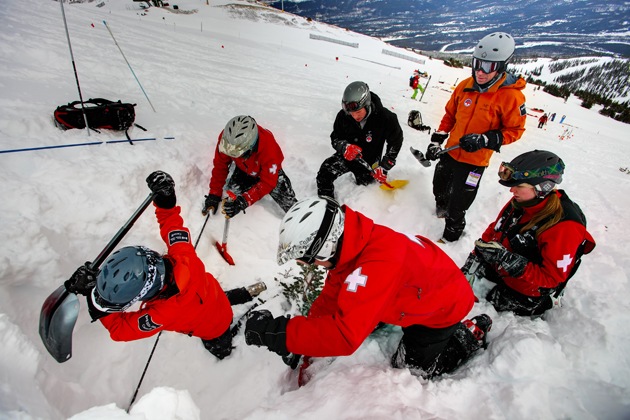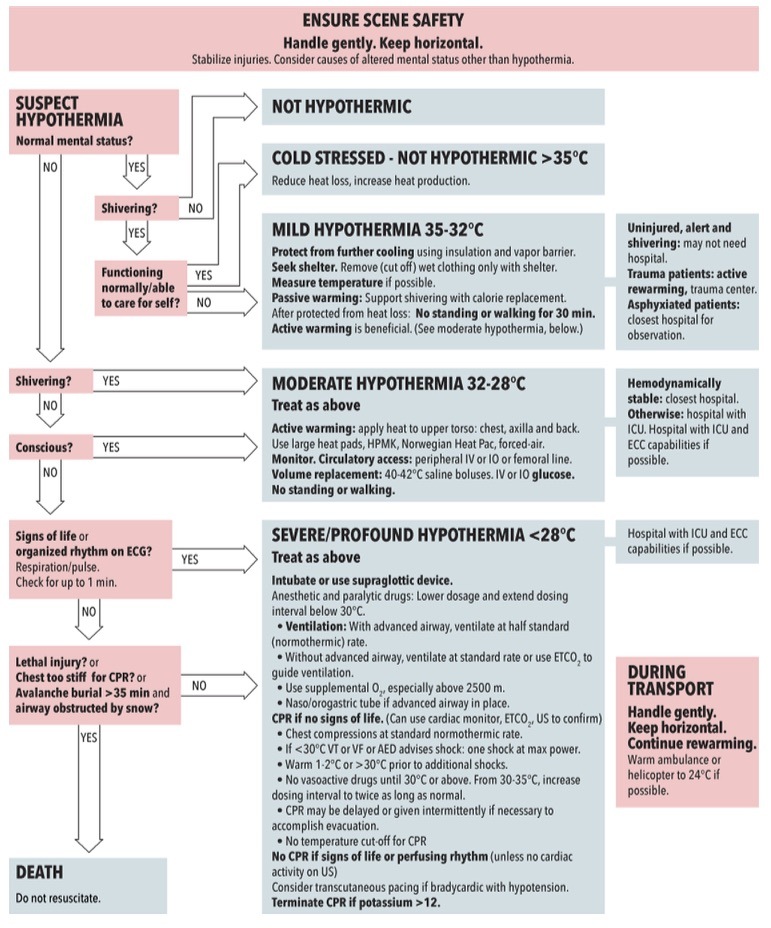
Treating Hypothermia: the Wilderness Medical Society guidelines
Accidental hypothermia is defined as an unintentional drop in core temperature to 35°C or below. Accidental hypothermia caused by environmental exposure can occur during any season, even in temperate or tropical climates.
Treating hypothermia: when it can occur
Treating Hypothermia: basic principles
The basic principles of rewarming a hypothermia victim are to conserve the heat they have and replace the body fuel they are burning up to generate that heat.
If a person is shivering, they have the ability to rewarm themselves at a rate of 2 degrees C per hour. But there are different levels of hypothermia.
When a person is in severe hypothermia they may demonstrate all the accepted clinical signs of death: cold, blue skin, fixed and dilated pupils, no discernable pulse, no discernable breathing, comatose status and rigid muscles.
The Wilderness Medical Society create a simple guideline to know what to do in different situation of hypothermia:



